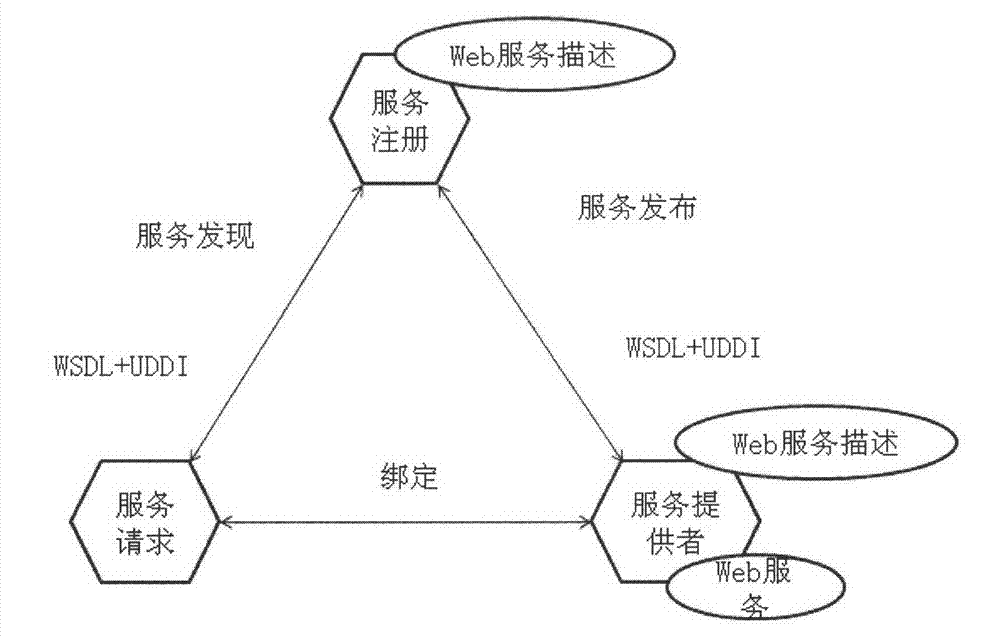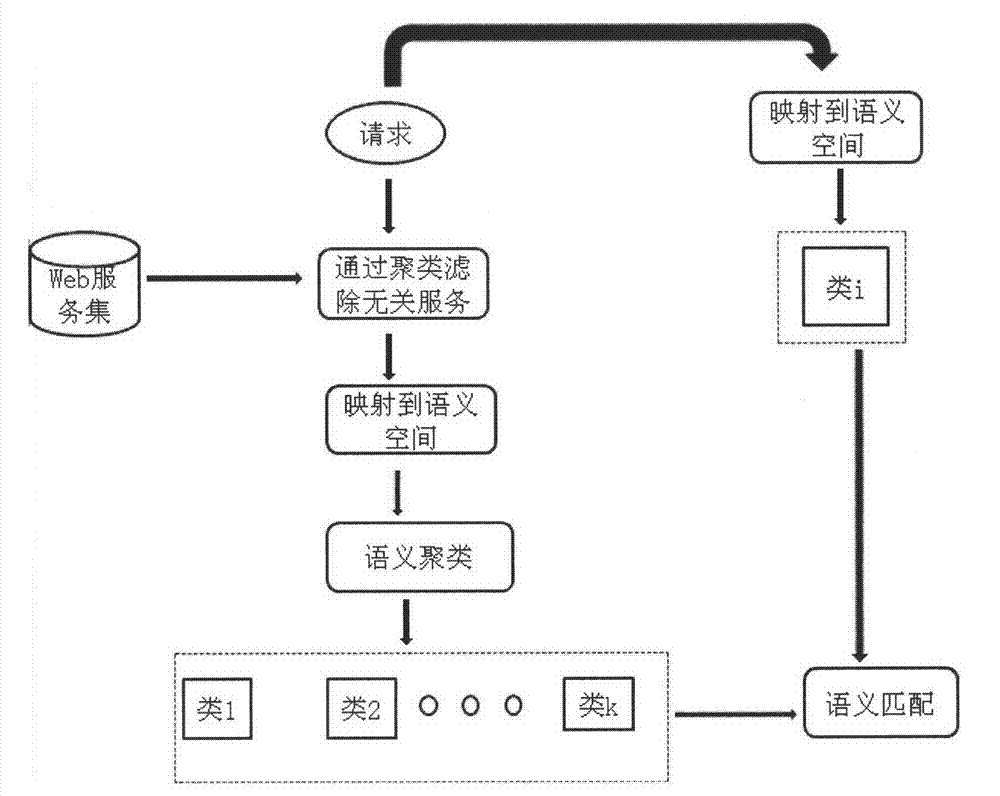World wide web service discovery method based on probabilistic latent semantic analysis model
A technology of World Wide Web services and semantic analysis, applied in special data processing applications, instruments, electrical digital data processing, etc., can solve the problems of lack of probabilistic interpretation, labor-intensive creation and maintenance, and limited applications.
- Summary
- Abstract
- Description
- Claims
- Application Information
AI Technical Summary
Problems solved by technology
Method used
Image
Examples
Embodiment Construction
[0039] Implementing the method requires the following steps:
[0040] Step 1) extract keyword information such as element name and text content from all constituent elements of the Web service descriptive document;
[0041] Step 2) data processing is carried out to the information extracted from step 1, mainly including removing stop words and word prototype processing;
[0042] Step 3) use the vector space model to represent each service in the service set, each service will be represented in the form of a vector, and the entire service set will be represented in the form of a matrix;
[0043] Step 4) remove the service that has nothing to do with the requested content in the service set by a clustering algorithm;
[0044] Step 5) to the data set obtained in step 4, use probability latent semantic analysis to further cluster into a certain number of semantically related clusters;
[0045] Step 6) calculate the semantic similarity between the request and the service in the s...
PUM
 Login to View More
Login to View More Abstract
Description
Claims
Application Information
 Login to View More
Login to View More - R&D
- Intellectual Property
- Life Sciences
- Materials
- Tech Scout
- Unparalleled Data Quality
- Higher Quality Content
- 60% Fewer Hallucinations
Browse by: Latest US Patents, China's latest patents, Technical Efficacy Thesaurus, Application Domain, Technology Topic, Popular Technical Reports.
© 2025 PatSnap. All rights reserved.Legal|Privacy policy|Modern Slavery Act Transparency Statement|Sitemap|About US| Contact US: help@patsnap.com



